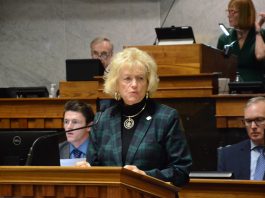Katie Stancombe for www.theindianalawyer.com
A former Ball State math professor convicted of child pornography and exploitation charges last year will have three of his convictions reversed after the Indiana Court of Appeals found some of the images of nude children he possessed did not explicitly depict “sexual conduct.â€
After Ball State University campus police were alerted to someone accessing child pornography on a classroom computer in May 2016, they discovered math instructor Brian Siebenaler in an empty classroom sitting behind a computer. As police entered the room, Sienbenaler frantically began closing windows on the computer, while officers noticed a flash drive inserted into the device.
Sienbenaler admitted to possessing photos of nude boys between the ages of 5 and 15 on his flash drive, which he uploaded to an image-sharing website in graphics interchange format, commonly referred to as GIFs. Police conducted a search and found roughly 2,000 such images on his flash drive.
Siebenaler was later charged and convicted of four counts of possession of child pornography and four counts of child exploitation, receiving a sentence of four years on each count to be served concurrently, all suspended to probation.
All but one of the images presented to the Delaware Circuit Court showed the uncovered genitals of boys, while the remaining image showed one boy fondling another underneath his clothing. Judge Marianne L. Vorhees said she “had problems determining whether, as a matter of law, these images were crimes, possessing these images, making these images was actually a crime.â€
Vorhees thus invited the Indiana Court of Appeals to look at the case, noting there was room for the COA to possibly reverse her determination. Similarly, on appeal, Sienbenaler argued the images did not depict “sexual conduct†as required by Indiana Code section 35-42-4-4, and that there was insufficient evidence to support his convictions.
The COA agreed with Sienbenaler that three of the images did not depict sexual conduct as defined under the statute and, thus, reversed two counts of child exploitation and one count of child pornography. It affirmed the remainder of his convictions in Brian Siebenaler v. the State of Indiana, 18A-CR-1381.
Specifically, Sienbenaler argued the images at the question in the first seven counts only depicted “mere nudity†and were, therefore, protected as free speech under the First Amendment. The appellate court rejected that argument on all counts, with the exception of one image listed under his child pornography convictions.
“Although the State argued at trial that Exhibits 9 shows that the boys were ‘about to engage in oral sex’ because the sitting boy’s head is at the level of the standing boy’s penis, we cannot agree with the State’s characterization of this image,†Chief Judge Nancy Vaidik wrote for the unanimous court. “First, it is hard to tell the distance between the boys. Second, the boys are not touching each other or even looking at or acknowledging each other; rather, they just happen to be in the same photograph.â€
The appellate court came to the same conclusion regarding two images listed under Sienbenaler’s child exploitation convictions, finding the images depicted boys “getting depantsed and then quickly covering themselves or pulling up their pants or shorts.â€
The court further noted the GIFs were not focused on the genitals and were not sexually suggestive, but rather the genitals were barely visible in some of the images. It concluded by finding that none of the GIFS ended with genitals, and the appellate court, therefore, reversed Siebenaler’s convictions on two of the child exploitation counts.



